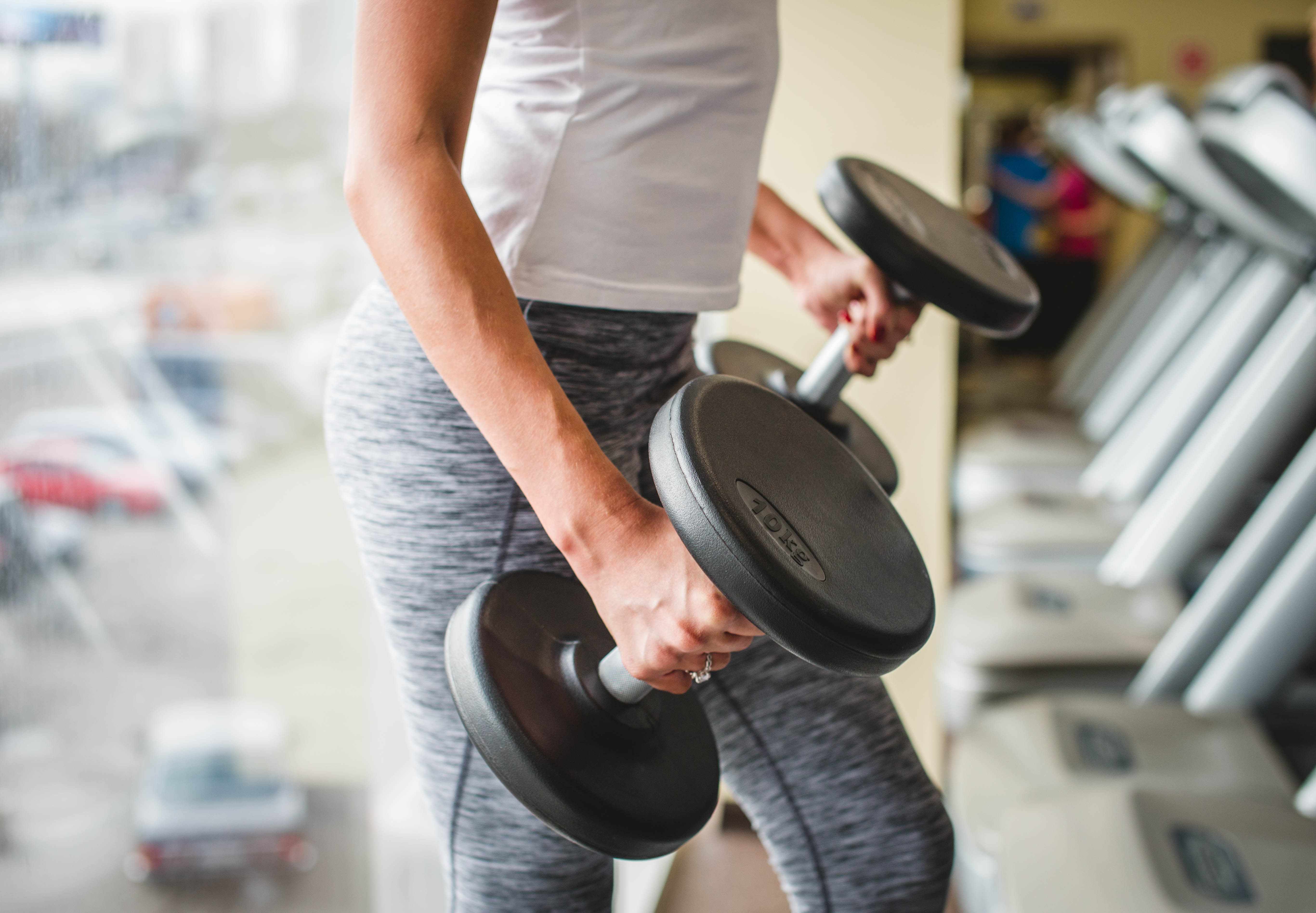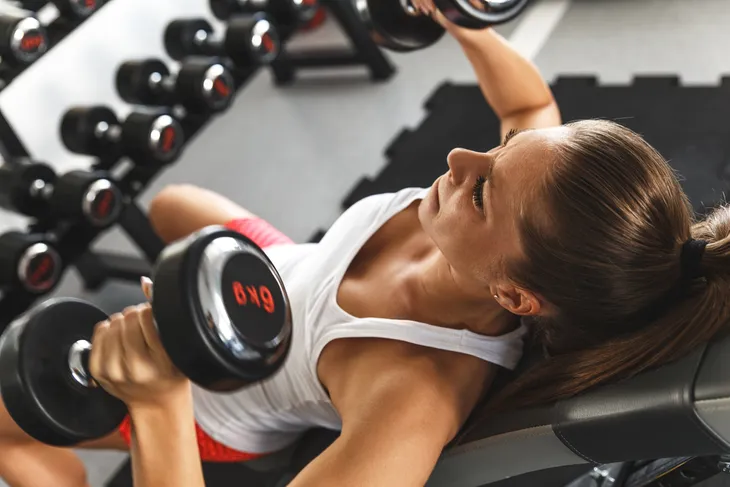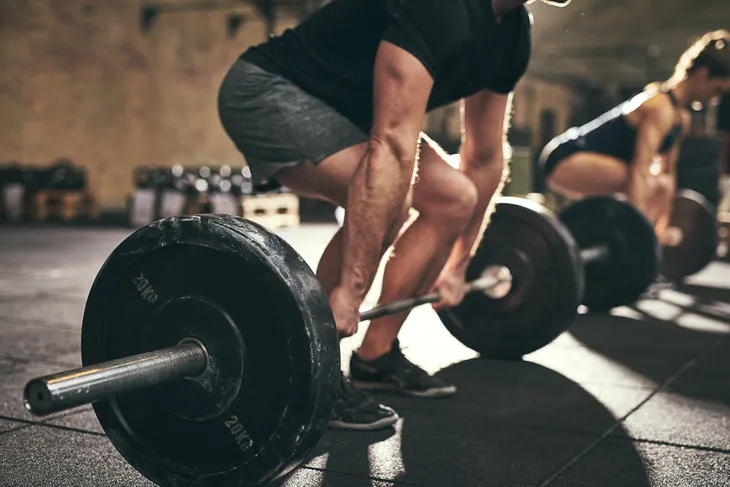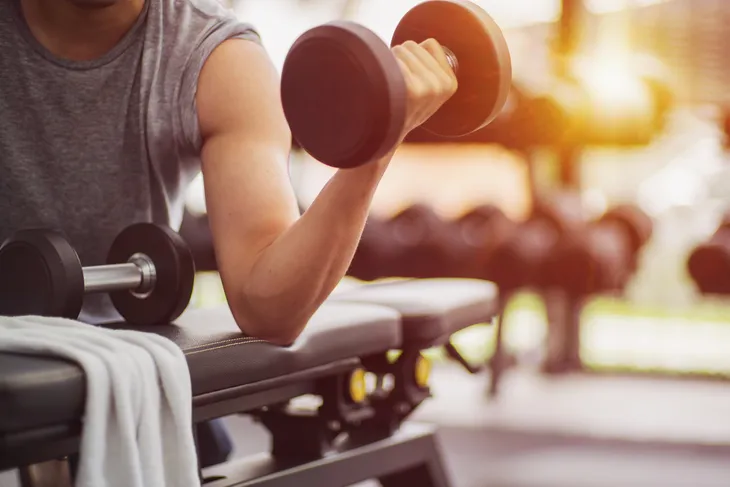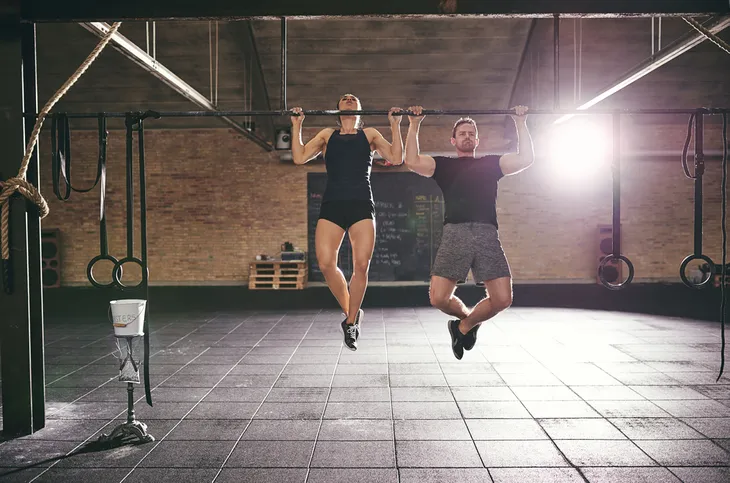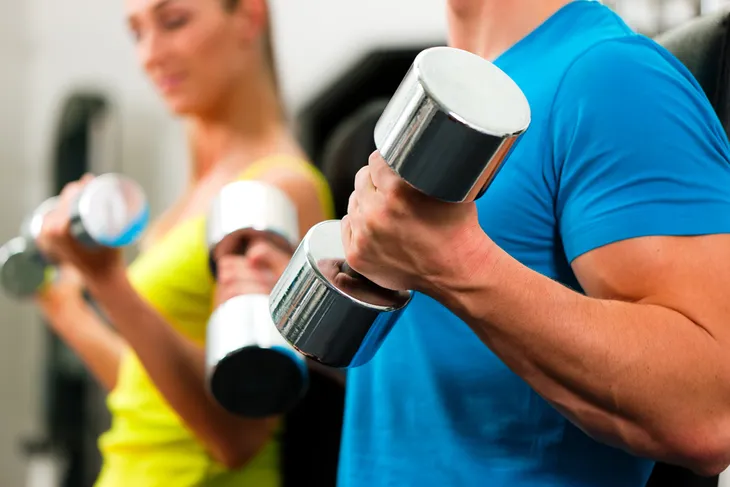Ask any fitness-minded person what muscles they’re most focused on building up, and there’s a good chance they’ll point to their arms. Both men and women can benefit from stronger arms and, aesthetically, highly toned arms are currently all the rage with people of all genders.
But what’s the key to building stronger and more toned arms? The change from flabby or skinny arms to muscular arms won’t come overnight—it takes lots of hard work and involves major lifestyle choices, from how you work out, to how often you work out, to what you’re putting in your body on a daily basis…
Keep it Short and Focused
The first step to building stronger and more toned arms: keep your workout sessions short, but intense. Focus on lifting heavier weights for a shorter period of time rather than lighter weights over the course of a long and relatively relaxed workout.
So, why is it so important to keep things short? For one, if you’re new to targeting your arms, the muscles in this part of your body may not be ready for prolonged workouts. Second, arm muscles tend to be easier to injure than muscles in other parts of the body. Remember that an injury can take place in just a matter of seconds and can completely derail your fitness goals.
Focus on Heavy Weights
If you’re determined to build strong muscles in your arms, set the lighter weights aside and focus on using heavier weights, whether that means in dumbbell or barbell form. As for how many repetitions you should perform, keep the number down. Your goal should be to lift more weights for fewer repetitions, rather than less weight for more repetitions. Many body builders focus on “training to failure,” which means you lift until you can no longer complete a full repetition.
Of course, it’s important to take caution when using this method. Avoid making drastic changes to the amount of weight you’re lifting, such as from 20 pounds to 40 pounds. Take your time; otherwise, you could be putting yourself at risk of injury.
Target Multiple Muscle Groups
When you’re focused on building up the strength in your arms, it’s easy to lose focus on other muscle groups. But that’s a mistake for a few reasons: for one, focusing too much on your arms could increase your chance of getting injured. Second, there are many great exercises that partially target the arms while also building up other important muscles, including the shoulders, back, and chest.
So, don’t spend all of your workout sessions doing exercises that target only your arms, such as arm curls. Make sure to incorporate exercises like push ups (which work your chest, arms and shoulders), pull ups (which work your arms, shoulders and back), and military presses (which work your arms, shoulders and back). These are known as compound exercises because they target so many different muscle groups.
Try Dumbbell Curls
To build your arm muscles properly, you need to spend at least part of your workout isolating these muscles. One of the best ways to do this is through the dumbbell curl, which starts with you holding a dumbbell with your arms extended down your sides, palms facing outwards. Next, bring the weights up to your shoulders in one slow but fluid motion, before turning your palms inwards and thrusting the weights above your head. Finish by reversing these motions, bringing the weights back to the starting position.
Focus on a weight that allows you to complete 12 repetitions for at least a couple sets. Make sure to rest the muscles in your arms (this exercise targets the biceps and triceps) between each set.
Try Chin-Ups
Chin-ups are fairly intimidating for those who have never tried doing them before, but when performed correctly they can help you make major gains in building muscle strength. The key is to slowly work your way into this particular exercise and to avoid pushing yourself too far. Failing to do so could leave you with painful injuries in a few different areas of your body, from the arms to shoulders, neck or back.
To perform a chin-up, stand below some kind of a bar (preferably a designated chin-up bar). Reach up to grab the bar with your palms facing back towards you. Pull yourself up so that your chin reaches the bar’s level before letting yourself descend back below the bar. Try to complete at least eight chin-ups over two or three sets. Important: be sure the bar you’re using is fully secure, or it could lead to an injury.
Consume Protein-Packed Foods
Any fitness expert will tell you that an important part of building muscle, whether that muscle is in your arms or somewhere else, is to consume lots of protein. But there are many different types of food that contain protein—so which kinds should you choose?
The trick is to focus on eating foods that have lots of protein but not too much fat or too many calories. Lean meats, like chicken, turkey and fish, offer an excellent way to get your protein without going overboard on the fat and calories. Additionally, egg whites remove much of the fat and cholesterol that make eggs a somewhat controversial food choice, leaving only lots of protein. If you’re a vegetarian or vegan, explore whey powders (which you typically mix with water, juice or milk).
Don’t Forget to Rest
Some people become a little too obsessive when they decide to build up a certain part of their body, such as the muscles in their arms. However, it’s important that you don’t focus too much of your time and energy on working out this one group of muscles. In fact, it’s important that you avoid spending too much time working out, period.
Ironically, taking regular breaks is a huge part of effectively building muscle in your arms. That means following particularly intense arm workouts—where you might perform lots of dumbbell curls and chin-ups—with a day of rest. Failing to do so could leave you with sore muscles, pulled muscles, or something even worse, so take your time and don’t forget to rest.
Don’t Forget Form
We’ve all seen people using mirrors to watch themselves lift weights at the gym. Sometimes, it’s because they’re just really into themselves and have a touch of narcissism. Other times, however, it’s because they’re actually focused on making sure they use the right form, improving their chances of making real gains and reducing the chances that they’ll sustain an injury.
If you’re not sure if you’re using proper form, keep these tips in mind: use slow, controlled movements and avoid swinging your body to complete repetitions. If you’re performing an arm curl, for example, you should only be moving your arm, with minimal movement in your shoulder and back. This is particularly crucial if you’ve recently increased the amount of weight you’re attempting to lift. Again, taking your time can be an important part of avoiding injury.
Watch For Warning Signs
Any time someone is looking to build muscle fast, whether it’s arm muscles, leg muscles, or muscles in some other part of the body, there’s a possibility that they will over-do it, leading to some kind of injury.
If you’re pushing your body too hard, it will make attempts to warn you. At the time of your work out, you may all of a sudden feel tired, dizzy, or sick to your stomach. This often indicates that you’ve pushed yourself to a point where the body no longer feels comfortable with the situation. After your workout, these feelings of stomach illness and dizziness could intensify and your muscles—particularly those targeted during your work out — could become very sore. If this occurs, be sure to slow things down during your subsequent workouts.
